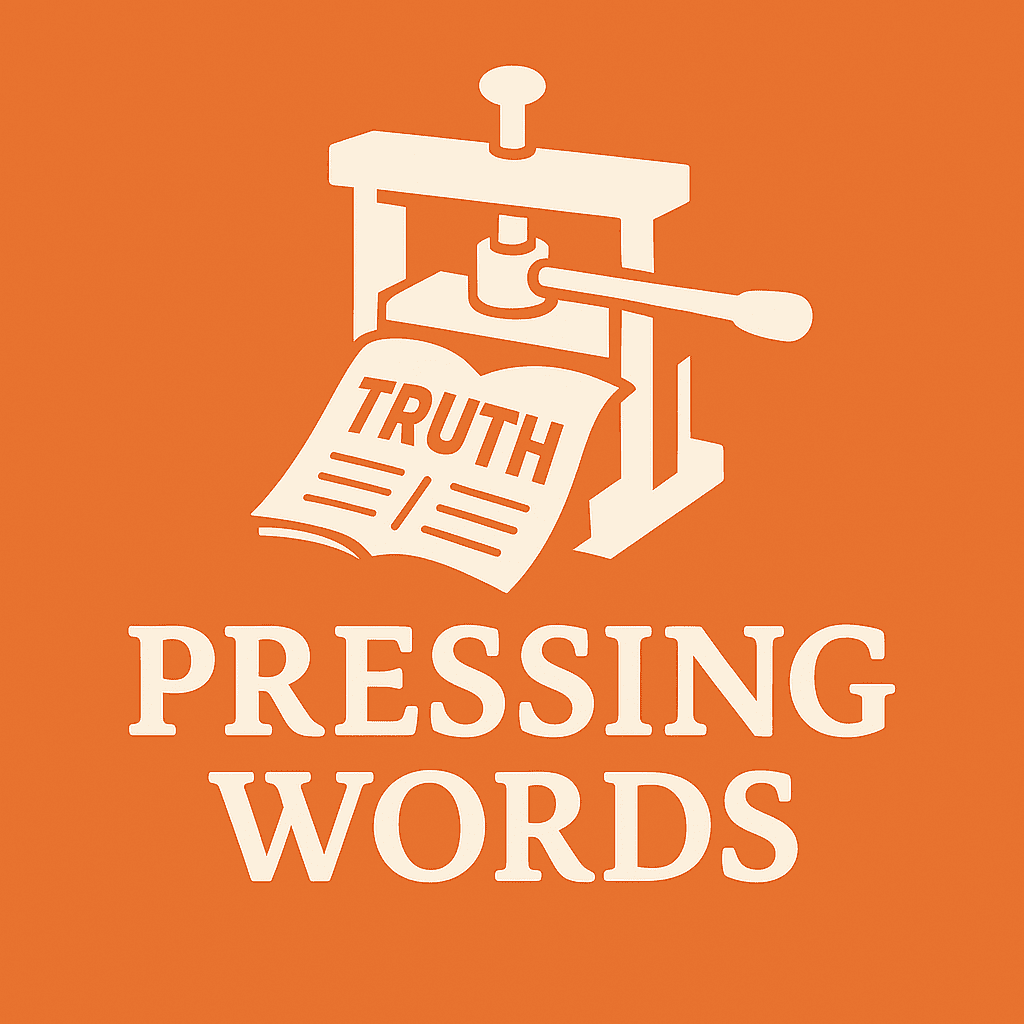
When the Bible speaks, it speaks as truth.
Not to flatter us, but to form us. Not to echo our voice, but to reveal His.
The First Recorded Philosophical Challenge to Scripture
“Did God really say…?” (Genesis 3:3)
The serpent’s question in Eden isn’t filler text—it’s the first recorded challenge to the trustworthiness of words. Before there were kings or councils, there was language. And there was a man and a woman deciding whether to plant their entire existence on what had been spoken. If those words could be bent, trimmed, or softened without consequence, then every truth that followed would stand on trembling ground.
And if the Bible is not true, not trustworthy, not from God—then all our theology, ethics, and worship are built on sand. But if it is true, then it’s not simply a volume of religious insight—it is the voice of God Himself, the foundation on which life, instruction, and knowledge of Him must be built.
Because the Bible is either true or it isn’t
This journey begins with the words themselves: do we have them as God gave them? From there, we’ll move through how to read them (hermeneutics), how to discern what they actually mean (exegesis versus eisegesis), where philosophy can assist—or derail—the process, and finally, how to test whether any given interpretation can bear the weight of a livable worldview. Along the way, we’ll note how theological positions can arise from different moves in that interpretive chain—without letting those debates hijack the purpose.
The aim here isn’t to win a quarrel. It’s to cultivate both confidence and humility: confidence that Scripture can be trusted, and humility to let it speak even when it cuts against our instincts, traditions, or desires.
The Reliability Stack
If you imagine Bible interpretation as a structure, each level is supported by the one beneath it:
- Textual criticism – establishing the most reliable wording of the biblical text.
- Hermeneutics – defining the posture and rules of reading.
- Exegesis – drawing meaning from the text in its own context.
- Philosophy – clarifying categories and testing for coherence.
- Worldview testing – seeing if the interpretation holds up in lived reality.
The integrity of every level above depends on the accuracy and honesty of the level below. Skipping one is like removing a foundation stone and hoping the building won’t notice.
The Words Themselves
Christians have always read copies, not the original autographs. That’s not a flaw; it’s an invitation to intellectual honesty. Across centuries we’ve inherited thousands of manuscripts—in Greek, Hebrew, Aramaic, Latin, Syriac, Coptic—copied, recopied, and preserved. They are not identical. And that is precisely why textual criticism exists: to compare these witnesses and reconstruct the earliest recoverable text.
Most differences are slight—variations in spelling, word order, or minor slips of the pen. A small handful are more significant, such as Mark 16:9–20 or John 7:53–8:11, but these are flagged in modern translations so no reader is caught off guard. This transparency builds trust. We don’t hide the seams; we show them.
Explainer: Textual Criticism
What it is: Scholarly comparison of manuscripts to identify the most likely original reading.
Why it matters: Confidence at the end depends on integrity at the start.
How to engage as a reader: Use a respected translation, read the footnotes, and resist building an entire doctrine on a disputed text.
The Reading Posture
If textual criticism tells us what we’re reading, hermeneutics determines how we read it. The historical‑grammatical approach asks: what did the author intend to communicate to the original audience, using the language, idioms, and literary forms of the time? It guards against two dangers: inserting our own assumptions into the text (eisegesis), and filtering the Bible through an alien grid that silences or reshapes its message (philosophical override).
A sound hermeneutic takes genre seriously—proverbs are not promises, apocalyptic visions are not news reports—and it keeps the text in conversation with itself, letting clear passages shed light on the obscure. It also refuses to change interpretive methods just to secure a preferred outcome.
Explainer: Hermeneutics
The framework and set of rules for interpretation. A consistent hermeneutic helps you hear the author before asking what it means for you.
Letting the Text Speak
Here we meet the difference between exegesis and eisegesis. Exegesis works from the text outward, tracing the author’s thought. Eisegesis works into the text, often smuggling in meanings the author never intended.
Exegesis is meticulous: marking where a thought begins and ends, observing repeated words, mapping arguments, testing each insight against the broader sweep of Scripture. It’s slow on purpose—because truth doesn’t need rushing. Eisegesis is often hasty, confident, and wrong; it skips context, twists metaphors, and settles for what “feels right.”
Explainer: Exegesis vs. Eisegesis
Exegesis is drawing meaning out of the text by following its words, grammar, and context; whereas eisegesis is reading meaning into the text from one’s own bias or cultural framework.
Philosophy in Its Place
Philosophy can serve theology well—sharpening definitions, testing internal logic, exposing sloppy reasoning. But it is a dangerous master. When external systems redefine Scripture’s own categories—when “freedom” becomes autonomy instead of covenant faithfulness, or “love” is reduced to mere affirmation—Scripture’s voice is muted.
The safeguard: let the Bible set its own grammar, and keep philosophy in the role of syntax helper, not dictionary author.
Explainer: Philosophy in Interpretation
Define your terms from Scripture before mapping them into philosophical frameworks. Let philosophy clarify, not control.
How Views Arise
Consider the old debate between monergism and synergism. Both camps quote Scripture; both affirm that salvation is from the Lord. Yet their differences arise from how they weigh certain passages, the hermeneutical lenses they apply, and the philosophical categories they use to frame causation and agency.
The point here is not to settle the debate but to see the anatomy of interpretation:
- Which texts are central, and which are seen as peripheral?
- How does the chosen method handle narrative versus didactic passages?
- Where do extra‑biblical categories nudge the reading?
Once you notice these moves, you can examine your own.
The Audit That Keeps You Honest
A sound reading of Scripture must produce a worldview that can be lived. That means testing interpretation with questions like:
- Correspondence: Does this match reality as we find it—creation, conscience, sin, suffering, redemption?
- Coherence: Do its pieces hold together without contradiction?
- Explanatory scope: Does it make sense of morality, beauty, evil, purpose, and Christ’s resurrection?
- Causal adequacy: Can it account for real change in people and communities?
- Livability: Can it be practiced without fracture or pretense?
- Moral authority: Does it ground “ought” beyond taste or power?
- Resilience: Does it survive historical, scientific, and ethical critique?
- Fruit: Over time, does it grow humility, justice, joy, repentance, perseverance?
Christianity has always invited these tests—not because it fears the light, but because it claims to come from it.
Practices That Train Your Instincts
Arguments sharpen the mind; habits shape the heart. If you want to become someone who instinctively lets the Bible speak for itself:
- Read in context. Don’t cherry‑pick lines; follow the author’s argument.
- Tell the truth about textual variants. Let readers see the seams.
- Make your interpretive method visible so it can be checked.
- Submit your reading to others who will challenge it.
- Tie life application to the text’s actual meaning, not to sentiment.
- Audit your philosophical terms; let Scripture rewrite them when needed.
Over time, these practices form an instinctive resistance to corruption—whether that corruption comes dressed as secular relevance or as sacred tradition.
What happened next—and why it still matters
“Did God really say?”
The question was not academic. It was the spark of corruption. The serpent reframed God’s words; the woman added to them; the man lived out a rewritten reality. The result was not only exile but distortion—the bending of truth to serve desire, fear, culture, pride.
That same corruption stalks interpretation. Scripture is twisted into a prop for our systems, a mirror for our prejudices, a mask for our control. The Bible is made to say what we want—until it no longer confronts, corrects, or saves.
If the Bible is true, it must be read faithfully, not conveniently. It must be interpreted with integrity, not ideology
Editor’s Note: The Bible is either true or it isn’t. If it is, then it remains the most trustworthy foundation for life, instruction, and knowing God as He truly is. This article was written to help readers hear Scripture on its own terms—textually honest, hermeneutically consistent, exegetically careful, philosophically restrained, and tested in real life—so that trust is formed by truth, not by convenience. May it strengthen those who are weary of distortion, and steady those who long to be shaped by the Word rather than to shape it.
